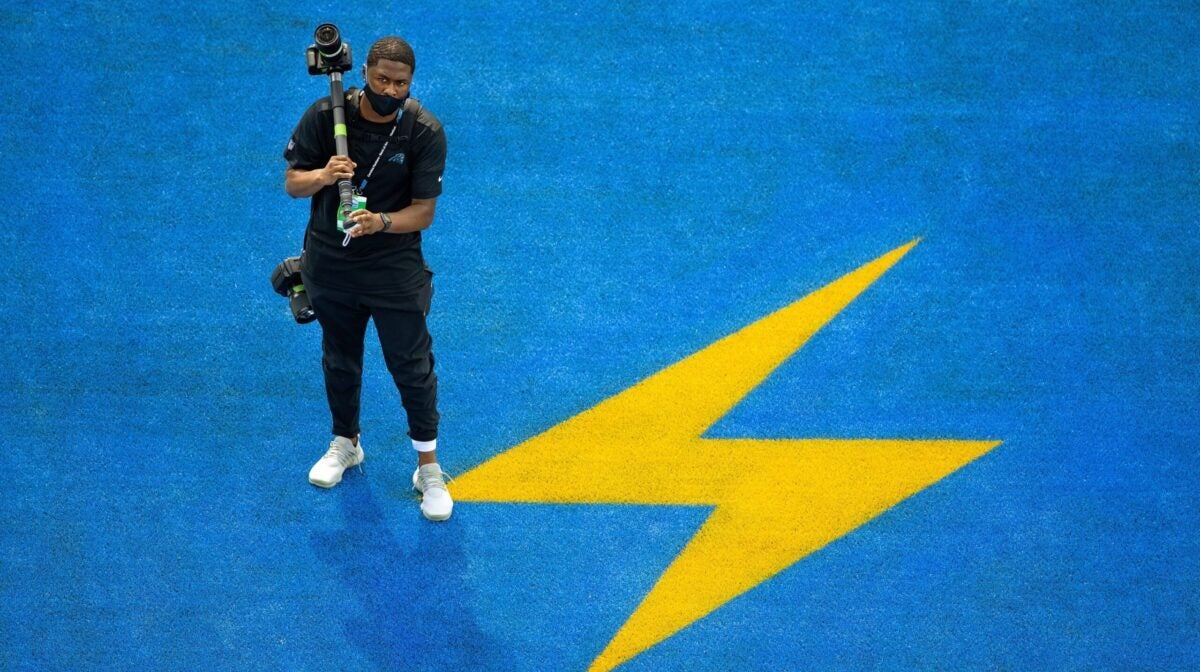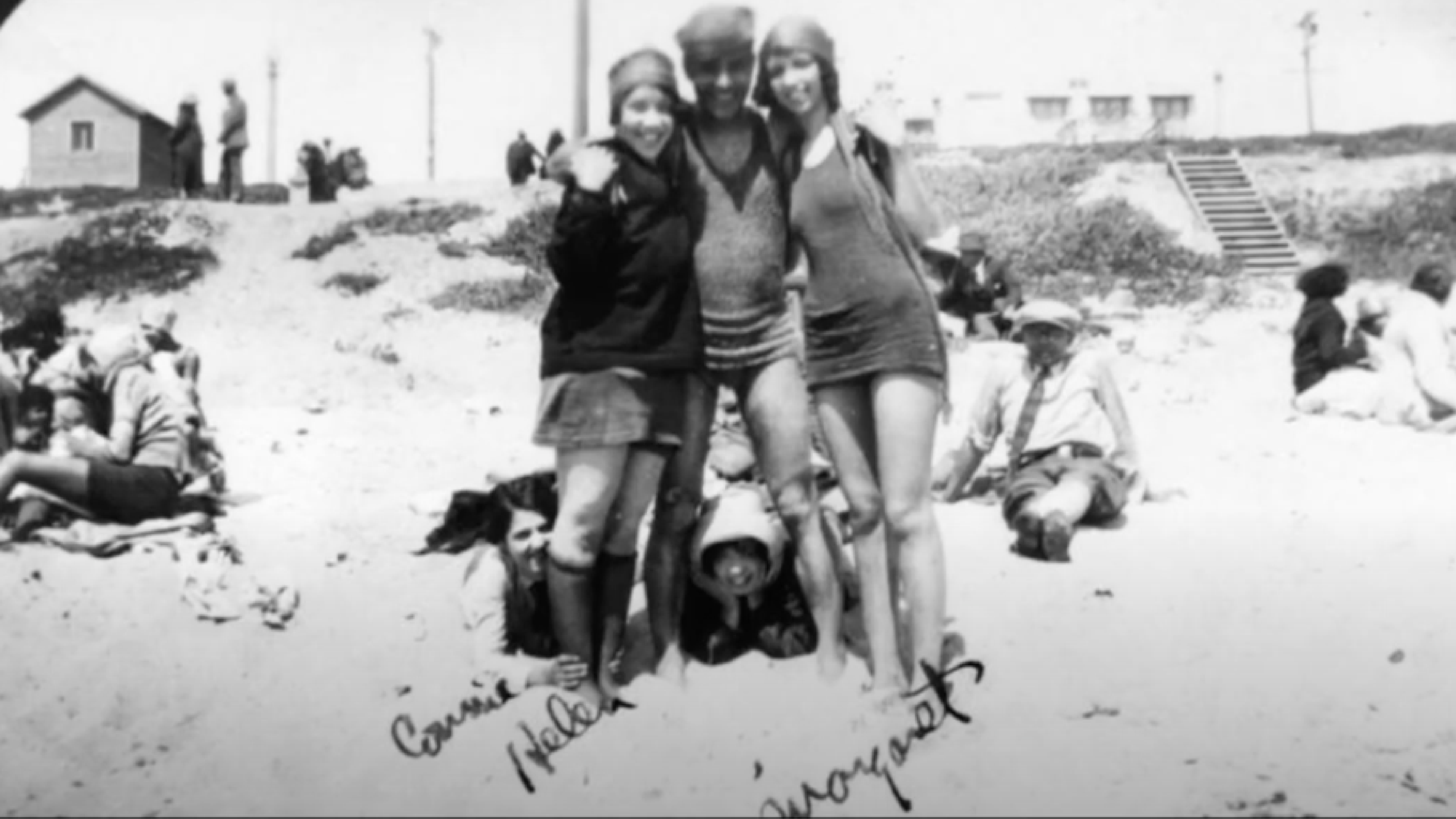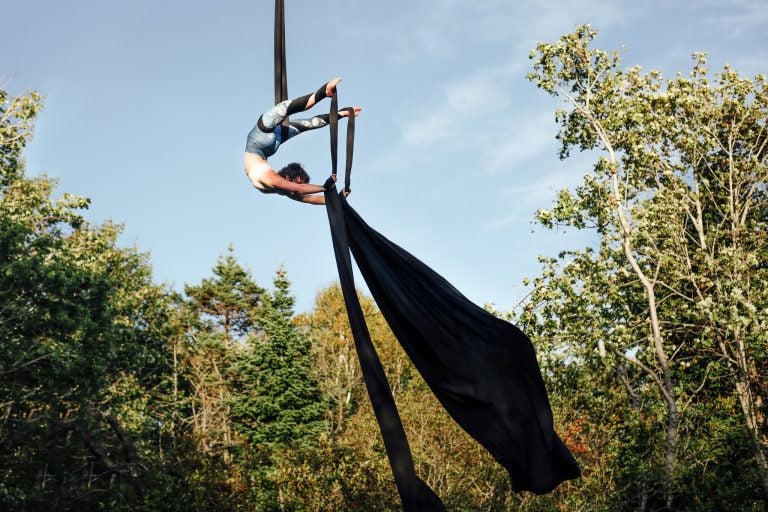Brandon Todd Chases Panthers for a Living
Why this matters
Within sports media, progress has been made in increasing its diversity on camera. But behind the lens, those actually taking the shots, framing iconic images, the space remains mostly white-male dominated.
As a kid, Brandon Todd posted pictures from sports magazines on his bedroom wall. Like Donovan McNabb throwing a pass or Tracy McGrady dunking a basket—images taken months, possibly years earlier. They made Todd believe that photographers possessed a super power: They could stop time.
He thought he would grow up to be a lawyer, until he got his hands on a camera. Today, at 28, he works with the Carolina Panthers and is the youngest African-American head photographer in the National Football League.
“I shoot at the home stadium eight times a year,” he says of the Panther’s lair, a 75,000-seater in uptown Charlotte, NC, where he can plan what he photographs. But on the road, “I’m looking at what I can do in the spur of the moment.”
He took a favorite recent shot during an away game against the Green Bay Packers. Panthers’ Quarterback Kyle Allen was exiting Lambeau field, and Todd captured the mood: “The snow coming down, the dirt on the back of his jersey. It was a loss,” he recalls, “but Kyle had his head up as if to say, ‘We’re moving in the right direction.’"
In high school, Todd also played quarterback, “but I wasn’t that good,” he recalls. He got his first camera in 10th grade. “I was shooting friends, flowers, places around town. It took me into a different world,” he recalls.
During summers, he interned with the New York Jets, who practiced at Hofstra University, only 10 minutes from his Long Island home. When he graduated and went four hours northwest to the State University of New York at Cortland, it seemed the Jets were following him as they’d moved their practices to his campus. During the season, though, he'd trek three hours down to New Jersey for games.
While working in football operations, he shared his photography work with Jets higher ups, and they segued him into a marketing-and-sponsorship role. In 2016, he became assistant team photographer under Dan Szpakowski.
As Todd neared the end of working—on and off--over nine seasons with the Jets, Szpakowski urged him to move on to a team where he could be the lead photographer.
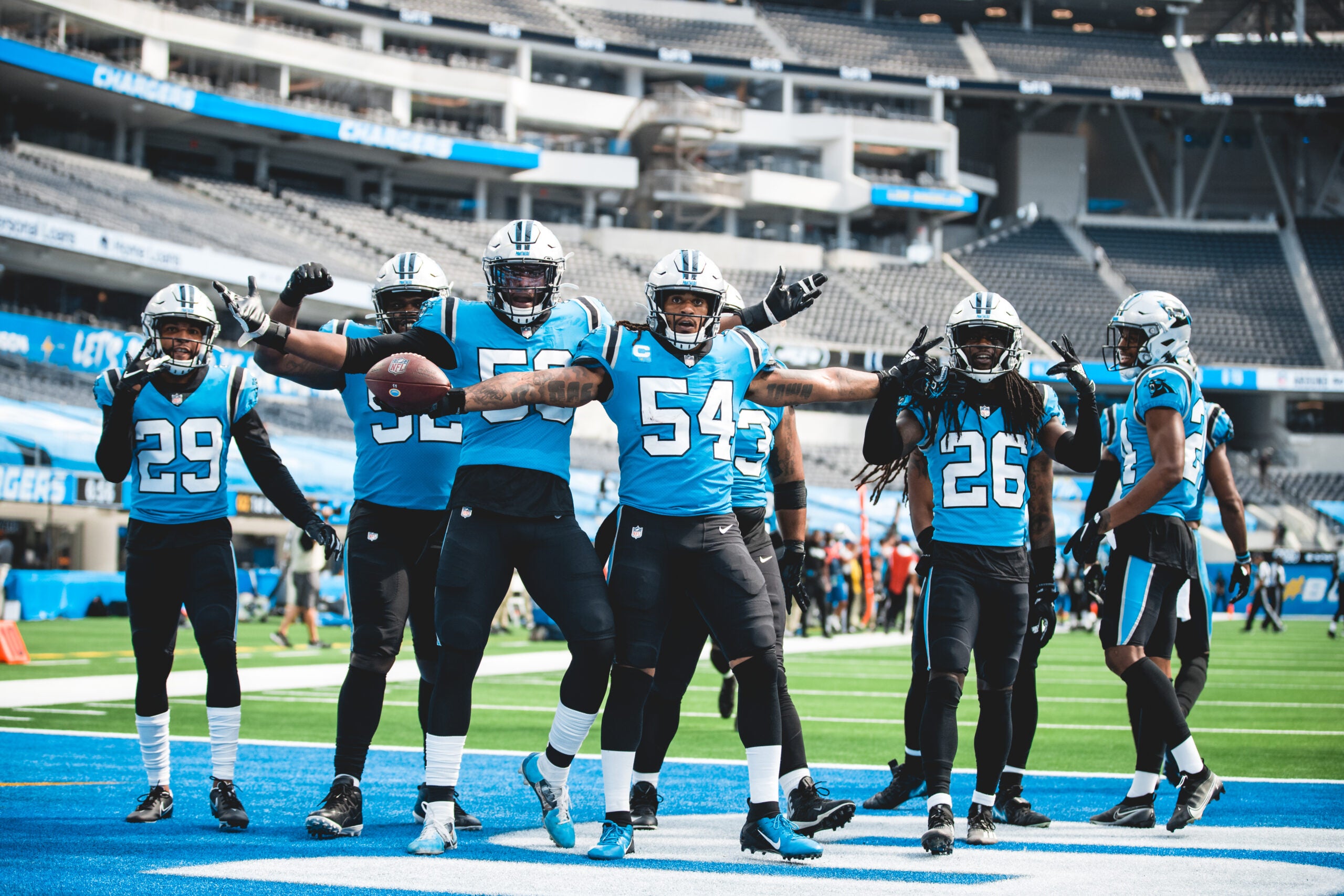
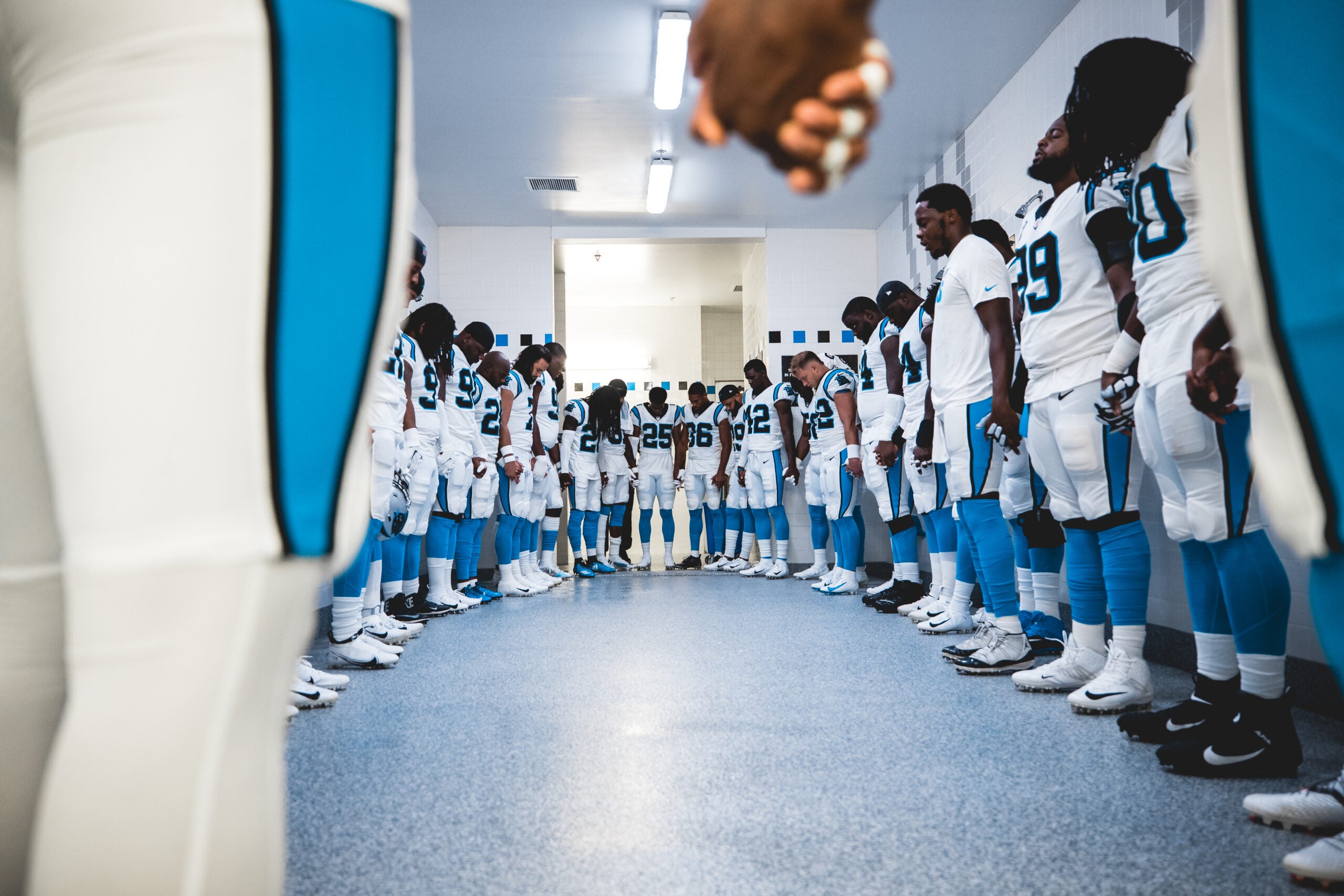
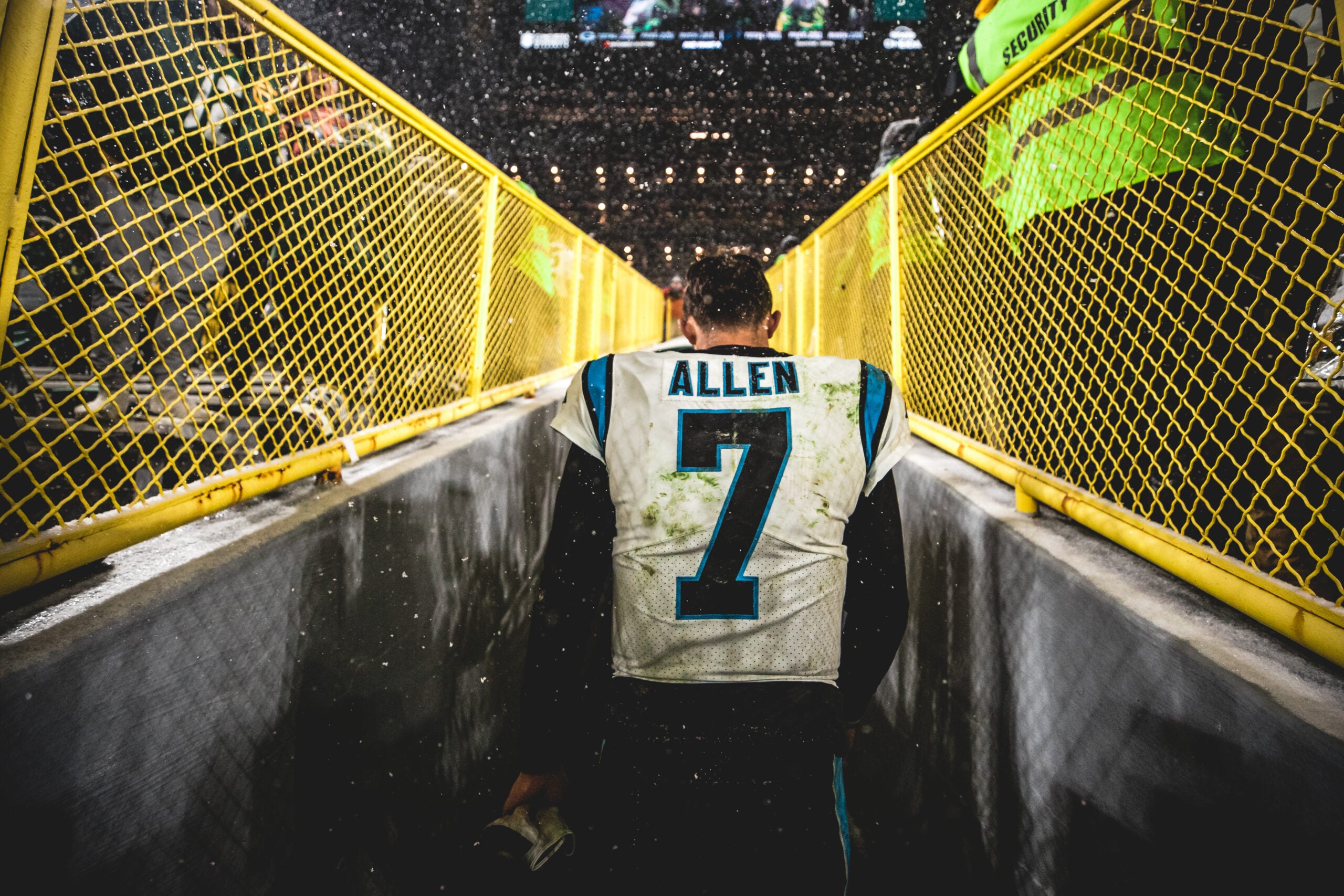
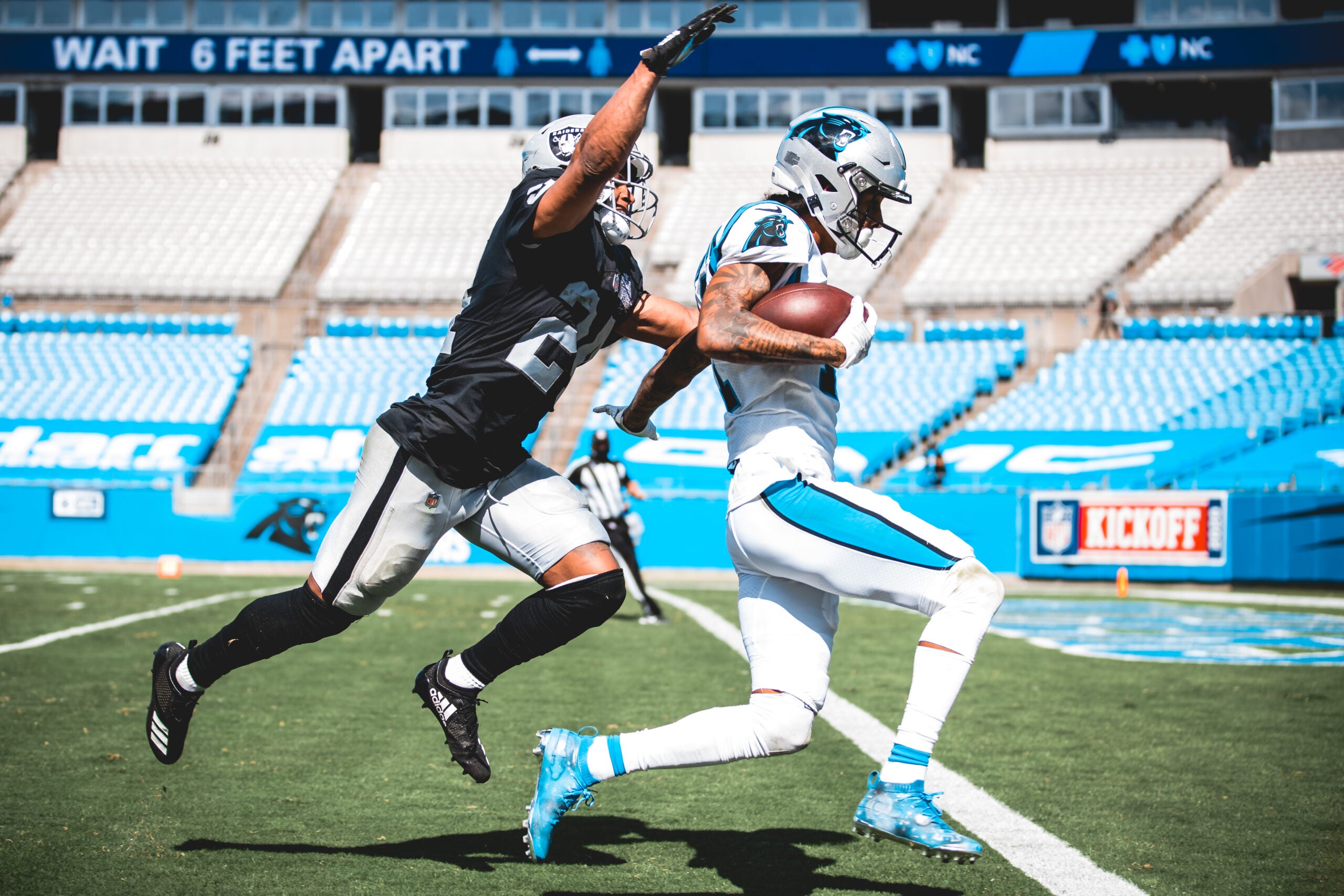
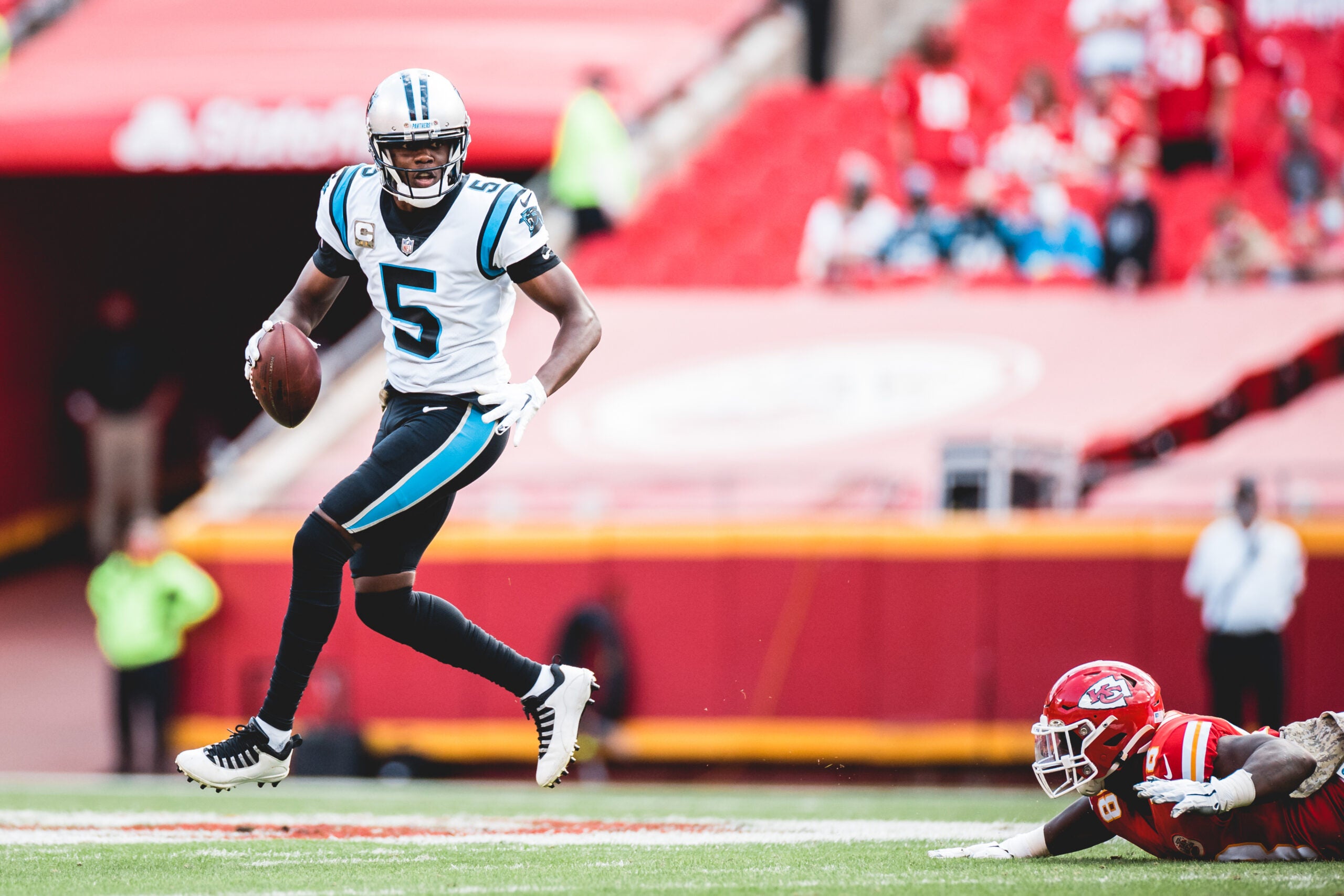
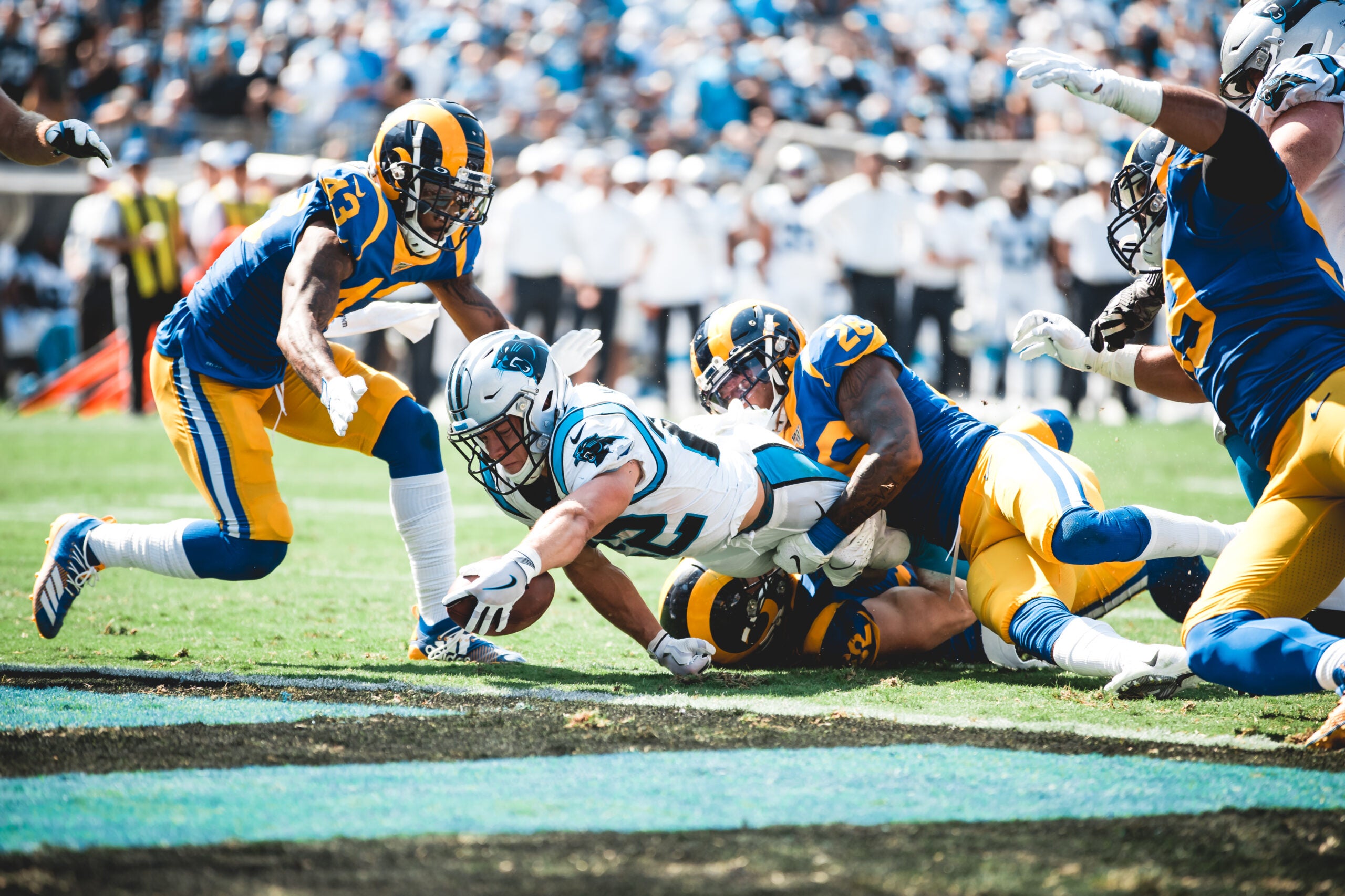
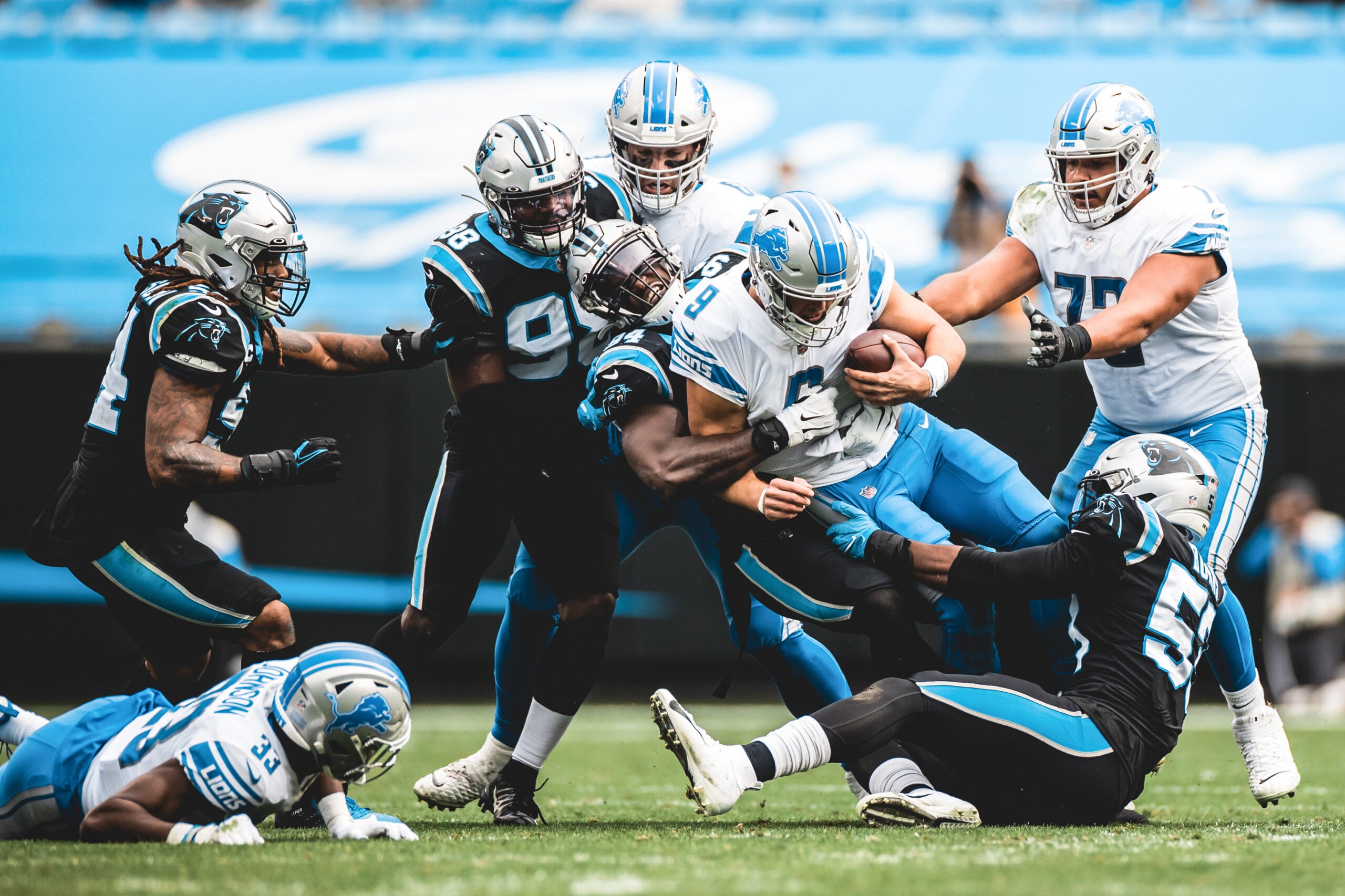
“I recognized his talent early on,” says Szpakowski. “His eye for composition. That under-the-helmet, documentary-style of photography.” He got Todd ready to level up by adding more back-of-house duties, such as organizing a photo library and getting the images to the players for their social media and personal use.
“He said, ‘You’re ready,’ ” Todd recalls of their conversations. “ ‘You’re ready to have your own team.’ And it was on my heart to do that. You want to stay where there’s family and it’s comfortable, but sometimes you have to leave to become who you are.”
He would also be foregoing some lucrative freelance gigs at New York’s Madison Square Garden and the Barclays Center: “I’ve photographed about 150 concerts and 50 festivals in a span of few years,” he says. “Everybody from Jennifer Lopez to Drake, Hall and Oats to Shania Twain.” But he was thinking big picture.
He interviewed for lead photographer positions with a couple of teams within the NFL that he didn’t get, and then he met with the Panthers. It felt right, as did Charlotte, the slower pace reminding him of Long Island. “It had access to the city but was not in it. I love to go to the city, but I never want to live there.”
With the pandemic, cities aren’t what they used to be—at least not yet—and neither are NFL games. Typically loud, jam-packed affairs, stadiums have became eerily quiet in the wake of Covid-19.
“Fans are usually the only energy source I need,” says Todd, who lugs lots of equipment and may take thousands of shots over the course of a game. Precautions led to the NFL creating a bubble, so players could get in the games, and fans could watch from home. Todd missed the soundtrack of their voices at his back.
“The fans get hyped with a touch down, a first down. They’re clapping and cheering. It makes a difference.” Without them, he says, “It was like a scrimmage, just with another team.” He disrupted the silence by listening to a playlist that included some of his favorites Jay-Z and J. Cole.”
Fortunately, in recent months some teams have allowed a percentage of fans to return. Todd guesstimates that number to about 2000 to 3000 at recent Panther games before the season ended.
He’s always down on the field, close to the action, where he’s been coached about how to deal with a 280-pound linebacker running at him full speed. In most instances the advice is, “Stay put. If you don’t move, they’ll hurdle over you,” he says.
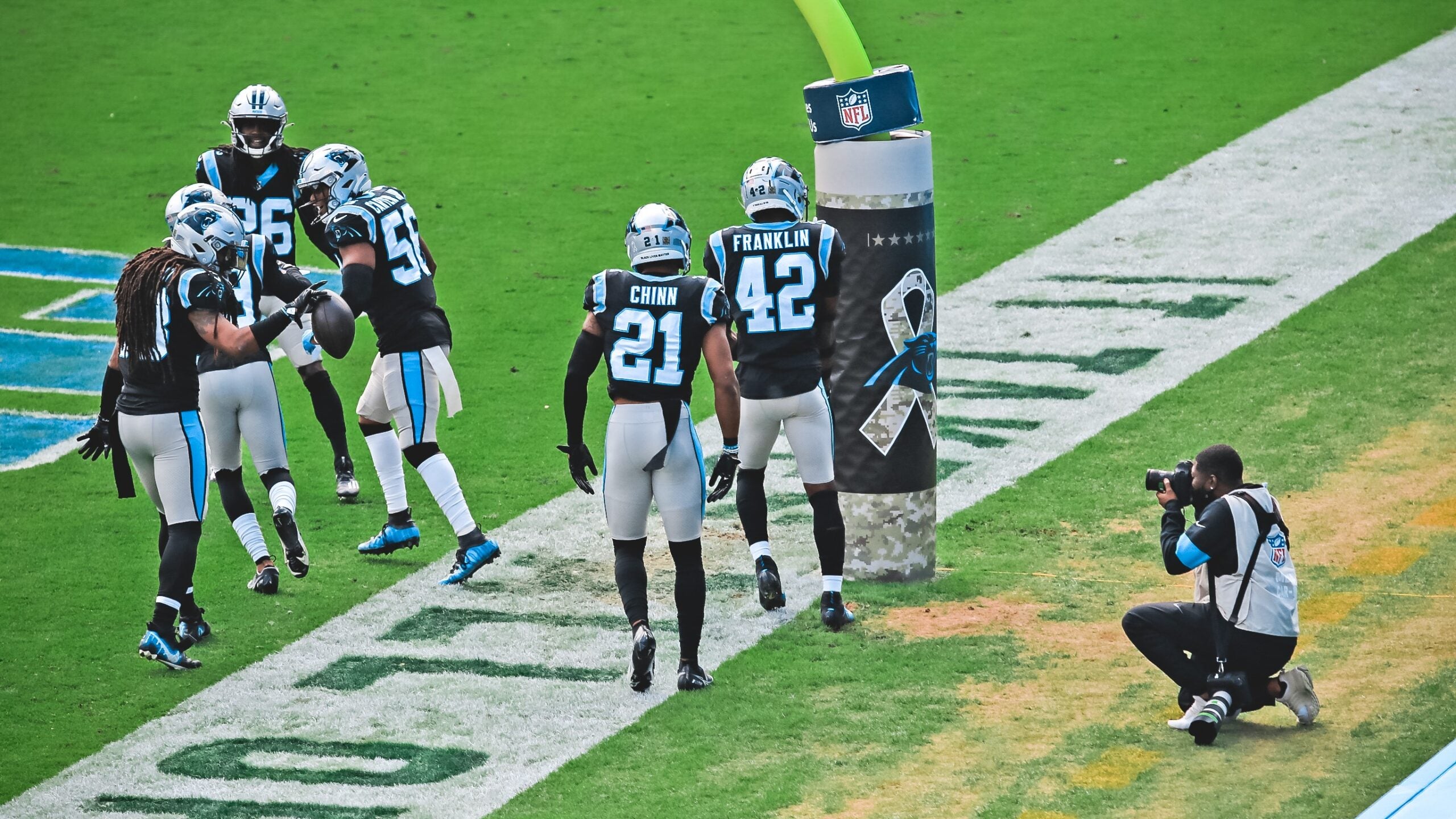
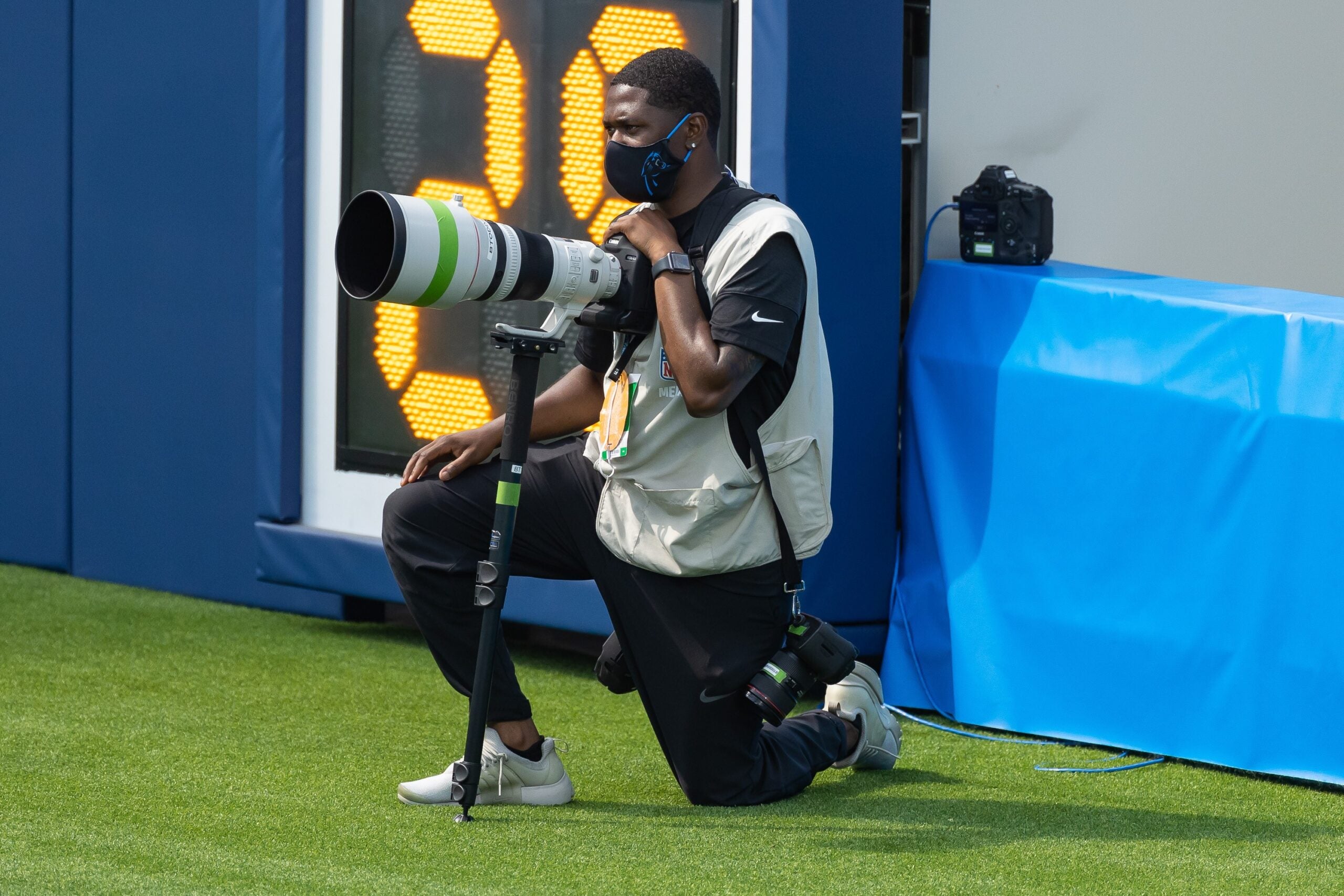
Fortunately, he’s yet to test that theory: “I see how it can happen, though. Those guys are moving so fast on the field. It looks fast on TV but, in real life, it’s 10 times faster,” he says. Meanwhile photographers might choose to take the hit, he says, thinking: “ ‘I want to stay here and get this shot.’ ”
Another challenge is using a telephoto lens to bring the faraway up close on a 100-yard field with 22 players in motion.
“You can lose track of where you are. I had to train myself to follow the quarterback. He’s the point of contact for everything,” says Todd. “I follow him until the ball is released from his hand, I may pop my head up just to see where the ball is going, and then bring it back down to the viewfinder, turning the camera in the direction the ball is going.” He clicks away, taking 50 to 60 shots at once, possibly 100.
As a teenager, he had the luxury of meeting friends at the railroad tracks to compose beautiful shots. In the NFL he has to grab an image while he can, sometimes shooting in the direction of the action, and hoping for the best. “There are things you can’t do again. Like I can’t say, ‘Hey Christian McCaffery, can you run that touch down again?’ ”
Todd is one of only two Black lead photographers, the other being Terrell Lloyd of the San Francisco 49ers. One of Todd’s initiatives is getting more Black people working behind the scenes in the NFL.
“I had an opportunity to bring on Callena Williams, an African-American woman, as a seasonal intern for the Panthers. She’s a recent graduate of North Carolina AT&T, where she photographed football and basketball.”
She recalls getting a direct message from Todd via Instagram and thinking it was a joke. The pandemic had hit, and students had been sent home. She’d been sitting around the house since March and it was September. Todd said he was looking for a second shooter for the season.
“He was on the field, and I was in the stands,” she says. He let me use his camera and gear, a certain lens that I didn’t have. We would meet after the game for him to collect his lens and offer feedback,” she recalls, adding: “He was a great teacher and helped me explore ideas.”
Between seasons, Todd likes to travel. He’s been to London, Paris and Spain, and post-pandemic, “I want to take a cross country trip,” he says.
He runs his own media-production company, TwoSeven Collective, where he works with other creatives and recently wrapped a commercial for a Miami Dolphins’ barber who launched a mobile shop. Down the line, Todd envisions creating an art center for kids.
Though he mostly works in the digital realm, since 2018 he’s printed out a physical book of his favorite shots at the end of every year. That way, “I have something tangible. It’s important to print out your pictures,” he says. “We don’t do that anymore. We should.”
He’s grateful that someone “stopped time” before his grandfather passed away last year, so that he can flip through a family photo album and come upon that day when “somebody took a picture of us as we sat by the pool.”
Monthly Issue
How the NFL Moves Forward
18 years after the inception of the Rooney Rule, data shows a lack of forward progress when it comes to diversity at the highest levels of leadership in the NFL.
What actions are necessary to move the chains on safety, equity, and inclusion in the league?

